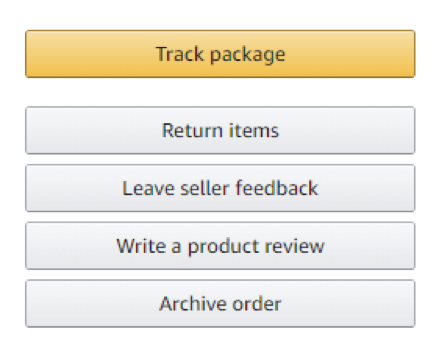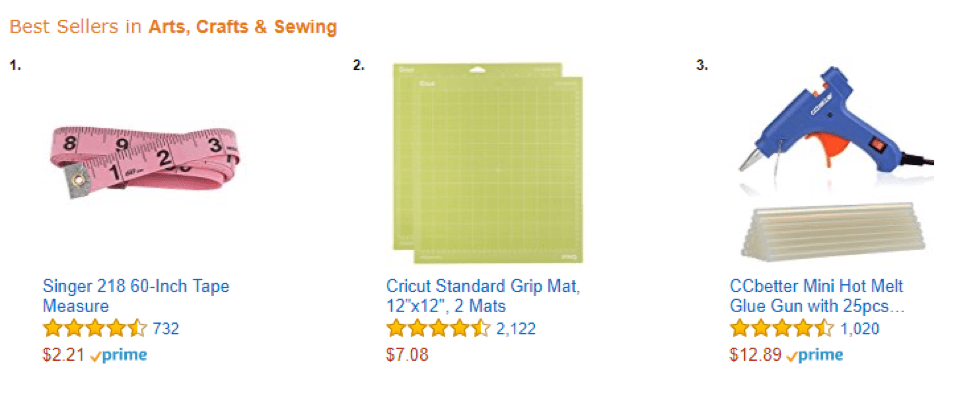
How Do I Approach Customer Reviews As A Seller?
As a seller on Amazon, sometimes the best way to improve your business is by putting yourself in the shoes of the customer.
As you can tell if you’ve read my previous posts, I like to point you toward the customer experience first to understand how to be successful as a seller. The reason is that this mirrors how Amazon operates: it always starts with the customer, making sure that whatever aspect of the business is best for the customer, then “works backwards” from there. Understanding how Amazon approaches its customers will help you understand how to navigate Amazon’s systems. So, think like a customer to improve your selling business! This shouldn’t be too hard if you’re like me - an avid shopper/customer on Amazon in addition to a seller.
This post will help you successfully navigate Amazon’s product reviews, one of the ways that Amazon allows its customers to voice their opinions on the buying experience. Amazon is very interested in hearing what its customers think, and they value what the people who buy things from the website have to say about the experience and products. Two important customer input tools are reviews and feedback. These two aspects are incorporated back into the shopping experience on Amazon, to help customers decide what products to buy.
What Are Product Reviews and How Are They Different From Feedback?
Reviews are a ranking and input system that allow customers to report on a product purchased on Amazon. Reviews are only supposed to describe the product itself - the Hawaiian shirt, the tart cherry puree, the USB drive - and not the purchasing/order fulfillment/processing/customer service experience. Customers are prompted to write reviews of products on the order summary (“Your Orders”) section of their Amazon account by a button that says “Write a product review” (see image below). Seller feedback, on the other hand, is about all the stuff other than the product - it is the purchasing/order fulfillment/processing/customer service experience. I’ll cover Feedback in a separate post, because it’s a slightly different beast.
Check it out! Here’s where customers are prompted to leave Product Reviews or Feedback:

Reviews are a tool that Amazon provides for customers for two big reasons:
- It allows Amazon some quality control on the products being sold by third-party sellers by being able to see how customers likes the product. If a product continually gets bad reviews, Amazon will take note - and so should you!
- It gives customers a better shopping experience because they can see other customers’ opinions of the product they are considering purchasing.
Reviews consist of a 1 to 5 star rating as well as comments that are entered by the reviewer/customer. The average rating along with the total number of reviews show up on the search pages, then shoppers can click to read the comments. This lets shoppers do a quick browse (by quickly checking the average rating) or a deep-dive (reading through customer comments) into the reviews, depending on how much time the buyer wants to spend on the review.
Check it out! Here’s an Amazon product search for Best Sellers in a specific category (Arts, Crafts & Sewing):

So, for Amazon and for shoppers, the average rating and the number of reviews are just as crucial as the price and the product itself, and they are the first thing a customer sees when searching for a product.
Why Should I Care About Reviews As A Seller?
Studies have shown repeatedly that people shopping for products or services online rely heavily on what other people have said about them. One recent study found that “85% of consumers trust online reviews as much as personal recommendations.” Just think about that for a minute. That means that the vast majority of shoppers treat the online reviews of complete strangers like someone giving them a personal recommendation. That is a LOT of people putting a LOT of stock in reviews!
85% of consumers trust online reviews as much as personal recommendations.
You may have experienced this as a shopper on Amazon, especially if multiple sellers are offering the same product that you want. How do you know which one to choose from? If you’re like me--and thousands if not millions of others--you check the reviews to see what other people are saying before you buy. For instance, I like to check reviews on Apparel items to make sure that the fit will be correct, so I look at reviews to make sure I know if the clothing item runs big or small. You should assume that your customers will be looking at reviews of your products when making the decision to purchase from you (and everyone else). Since reviews are a huge part of the buying experience on Amazon, they are also a crucial part of the selling experience!
Good reviews and feedback also put your products in the running for the elusive “Amazon’s Choice” designation. I go into more detail about that in my post on Feedback.
Some Key Things About Amazon’s Review Policies
In theory, only people who have purchased your product from you can write a product review - Amazon has many security checks in place to prevent fraudulent reviews. It is important to note that the integrity of the review process is VERY important to Amazon.
According to Amazon’s current Anti-Manipulation Policy for Customer Reviews:
“If we determine that you have attempted to manipulate reviews or violated our guidelines in any other manner, we may immediately suspend or terminate your Amazon privileges, remove reviews, and delist related products. In addition, if we determine that an Amazon account has been used to engage in review manipulation, remittances and payments may be withheld or forfeited. Misconduct may also violate state and federal laws, including the Federal Trade Commission Act, and can lead to legal action and civil and criminal penalties.”
In other words: DO NOT DO ANYTHING THAT MAY CAUSE AMAZON TO BELIEVE THAT YOU ARE MANIPULATING REVIEWS! It is always better to be a seller with so-so reviews than to be someone who is banned from selling on Amazon. This includes asking your customers for positive reviews or specifically requesting that a negative review be taken down. Until recently, it was common for sellers to reach out to customer who left a negative review via email or messaging through seller services (or even via phone!), and, after offering a refund or replacement, ask the customer to remove the review and add a positive one. This is no longer okay. In fact, it is prohibited by Amazon’s Seller Code of Conduct to request a buyer to remove a review. Specifically, Amazon states that:
“You may ask buyers to write a review in a neutral manner, but you may not ask for positive reviews, ask for reviews only from buyers who had a positive experience, or ask a reviewer to change or remove their review.”
Also, in the past, sellers could provide products at a discount in exchange for a review, as long as the reviewer added a disclosure to the review to let the next customer know that they received some compensation. This is no longer allowed, except through Amazon’s own program called Vine.
In addition, Amazon is now directing sellers to only contact buyers through the Buyer-Seller Messaging Service, and not through email or phone. Amazon automatically sends an email to customers after a purchase that requests a review of the product. If you do choose to email, I’ve got some tips below to help, but again, just make sure you’re in line with Amazon’s Code of Conduct.
Positive and Negative Reviews: What’s A Seller To Do?
First, you want to make sure you are getting as many product reviews as you can from your customers. This means that you should ask your customer for a review...in the correct way (to avoid the ire of Amazon). There are “right” and “wrong” ways to ask for reviews, per Amazon’s policies. One great way to ask for a review is to include a note with the product with instructions on how to submit a review. This adds a personal touch and it reminds the customer at the moment they get the package to write a review. Again, make sure you are not including any phrases that may make Amazon think that you are only soliciting a positive review! Saying things like, “if you love our product, please leave a review!” is seen by Amazon as review manipulation, because you’re asking for a review only from people who love the product. Instead, respectfully invite the customer to leave a review in a neutral way, like “we love to hear from our customers about our products! Please tell us what you think by writing a product review.”
If you do write a follow-up email, try to include some extra information (besides the review request), such as a list of unique ways to use the product that the customer may not have thought of. It will make the customer feel like they are getting special attention, receiving something useful, and not just getting nagged for something. Keep in mind, though, you cannot send customers links to anything (other product pages on Amazon included!). What you provide must be contained within the email, so no links to videos, to your website, or to other products you have listed on Amazon. What you can give the customer is some helpful tips on using the product (“Here are some cleaning tips for your product that will make it last forever!”).
So, you’ve asked for customer reviews and you’ve gotten some reviews on your products, some positive and some...not quite as good. Given Amazon’s strict anti-manipulation guidelines, what can you do to maximize the reviews for the benefit of your business?
What to do with Positive Reviews:
Positive reviews feel great. It means you’ve done your job as a seller and gotten your product into the hands of someone who really likes it. Make sure to reward the people who give you positive reviews with great customer service! Why stop at someone ordering your product once? Ideally, you’ll land a repeat customer with every positive shopping experience. Make them want to try your other products because of the experience. Respond to their positive review with a big thank you by clicking the Comment button under the review!

Also, responding to positive reviews through comments shows other potential buyers that you are a hands-on seller who is tuned in to your customers and your products. Win-win!
What to do with Negative Reviews:
I want to let you in on something that will help with any anxiety you may be facing about negative reviews: they aren’t as bad as you think! In fact, a recent report indicates that people gravitate toward products that have lots of reviews, even if the reviews aren’t perfect. What this means is customers value quantity of reviews over the ratings, so they will still buy your product despite negative reviews if there are lots of reviews.

Negative product reviews are also a great litmus test for your business. Use them as a way to track and adjust inventory - if lots of people are responding negatively to a certain product, it may be time to stop selling it. If you notice that products from a certain supplier are getting lots of negative reviews, it may be time to look for another supplier who can provide a higher quality version of that product. Use the comments or messaging to get a better idea of what the customer does not like about the product if the review is vague. Again, this shows other potential customers that you are responsive to the needs of your customers!
Can I Remove Negative Reviews?
I get asked this question a lot by concerned sellers. The answer is...it depends.
The only people that can remove a review are the customer who wrote the review and Amazon. Amazon will remove the review if it violates Amazon’s Community Guidelines, or if it is not an actual product review (e.g. it talks about the shipping, seller interactions, or anything outside of the product itself). The process is simple: click the Report abuse link next to the review to report it to Amazon. If you suspect you are getting trolled with fake reviews, you can also click the Report abuse link. Make sure you provide detailed information about why you think it violates the guidelines and/or is fake or abusive.

Amazon has changed its policy about compensation for reviews. This includes providing a refund in exchange for removing or changing a review. Specifically, Amazon says that you may not...ask a reviewer to change or remove their review.” So, what can you do?
You may still offer a refund or replacement if the customer isn’t happy with the product. If you do send a replacement, it is okay to ask for a product review of the new product in a neutral way. And, since you will continue to provide excellent customer service to customers even if they leave a negative review, it can benefit your Seller Feedback by being attentive to the unhappy customers as well as the satisfied ones.
Remember: keep thinking like a customer, keep selling great products and providing great customer service, and keep track of Amazon’s selling policies, and your reviews will take care of themselves!
